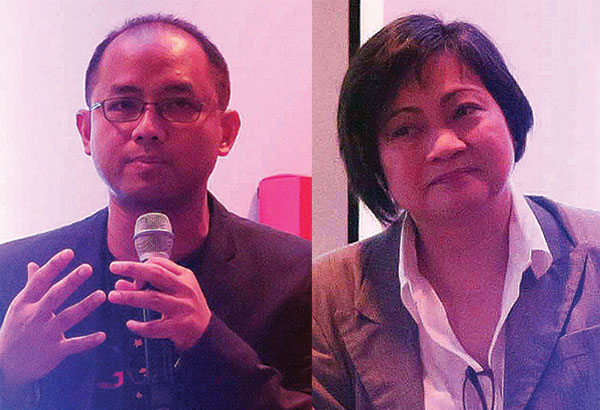Betting on e-commerce in the age of the mobile ‘supershopper’

MANILA, Philippines – It isn’t surprising that the Philippines’ online market is projected to grow 34 percent over the next 10 years to reach $19 billion by 2025, according to a joint study done by Google and Temasek. Perhaps what is surprising to many is that the majority of the growth is forecast to come from e-commerce.
A country with low credit card penetration, relatively lower purchasing power than its Asian neighbors and a backward logistics infrastructure thriving on e-commerce? The driving factors are clear: the Philippines has a huge population (over 102 million) with a healthy GDP growth (5.9 percent in 2015), with 61 percent of the population owning smartphones and 39 percent owning computers.
The Google-Temasek study also boldly predicts that e-commerce is set to grow at a compound annual growth rate of 34 per cent from $5 billion in 2015 to $9.5 billion in 2025. Moreover, the number of people buying goods and services online is predicted to grow by 18 percent annually, or five times in 10 years from eight million to 42 million in 2025.
The report shows that while opportunities are great for the Philippines, the country needs to overcome a number of key challenges including logistics and connectivity, complexity of payments, market readiness, fraud and cybersecurity – with the most pressing need being in the area of investment.
“With all the advantages that the internet brings with it, there’s never been a better time to start a business in the Philippines,” said Ken Lingan, country manager of Google Philippines.

With the Philippines’ online market projected to grow 34 percent over the next 10 years, there’s never been a better time to start a business, says Ken Lingan, Google Philippines’ country manager, and Minette Navarette, president of Kickstart Ventures.
According to Minette Navarette, president of local venture capital firm Kickstart Ventures, this is exciting news from an investors’ standpoint. “When you are an investor, what you are looking for is growth opportunities. Clearly, the report validates a lot of the bets we made in the Philippines and a lot of the optimism here,” she said.
‘Mobile first’ and ‘mobile only’ Asia
How many times do people look at their phones on average in a day? Gabby Roxas, Google Philippines’ head of marketing, said globally, people look at their phones around 150 times.
We wake up, check the time and the weather, check our news feeds. At the bus, train or whatever one’s mode of transportation for the day, we listen to music, text a friend, or use maps to navigate to our destination. Maybe we hail a cab through our phone to get a ride. Then at lunch or whenever there is dead time, we play games or watch videos, take photos, post comments on social media. While at work, we book movie tickets, shop online, or maybe check personal emails and messages. After work, we watch movies. The list goes on.
Another study conducted by Google with research firm IPSOS shows that mobile consumers in the Philippines and in Asia are transforming the landscape.
“I think the difference between Western countries and Asian countries is that they came online through desktops or through their PCs but we are coming online through our smartphones,” Roxas said. “As Asians, we are mobile first and we are mobile only.”
He revealed that the smartphone adoption rate in nine markets in Asia is actually higher than that of the United States (72 percent). In comparison, smartphone adoption rate in Singapore and South Korea is at 91 percent. Following closely are Taiwan (82 percent) and Malaysia (81 percent). These four countries are actually part of the global top 10 in terms of smartphone adoption.
Four other countries – Australia (80 percent), Hong Kong (79 percent), China (79 percent), New Zealand (76 percent) – bested the US, while Vietnam (72 percent) is on par with the US. The Philippines, with a 61-percent smartphone adoption rate, is not really far behind.
“What this data is showing is that there is a shift. Innovation is going to come from Asia-Pacific,” Roxas said.
The mobile ‘supershopper’
The implications for this mobile trend for marketers, especially here in the Philippines, is huge, according to Roxas.
Consumers, he said, have more screen time and there’s actually an incremental exposure to different screens day in and day out, which gives rise to the mobile-powered “supershopper.”
These modern-day shoppers are super-informed, they keep their options open (in terms of product or brand choice), and mobile is their door to the store.
The Google-IPSOS joint study also shows that consumers (88 percent) in the Philippines are making purchase decisions more quickly because of online research. Before they even set foot in a physical store, they already know almost everything about the product they are intending to buy.
A vast majority (82 percent) is uncertain of a specific brand they want to buy but they keep their options open. They would be happy to switch brands if need be. Around 72 percent said they have purchased a brand they would not normally consider because of relevant information available on their smartphones at the moment they need the information.
Mobile also drives in-store sales. Some 51 percent of respondents from the Philippines said they visit stores to research further after seeing an online message from a company. Around 78 percent have used a store locator (map) to find a store location and 80 percent also still consult their smartphone while making a purchase in a store.
And most importantly, they love helpful videos. Eighty-four percent said they are more likely to buy from companies who provide instructional video content.
“They (consumers) evaluate their options well and they are much more confident about their choice,” Roxas commented on the attitude of today’s shoppers. “They do their homework. It’s no longer a mindset that this is the brand or the product that I am going to buy. They are so much open to disruption.This is an opportunity for small brands to come in and actually disrupt the market.”
“But at the end of the day, there is still loyalty,” he concluded. “If they have a great experience with their products, they will stick but I think it is a matter of time before they go looking for alternatives so brands and marketers need to be there.”
- Latest





























